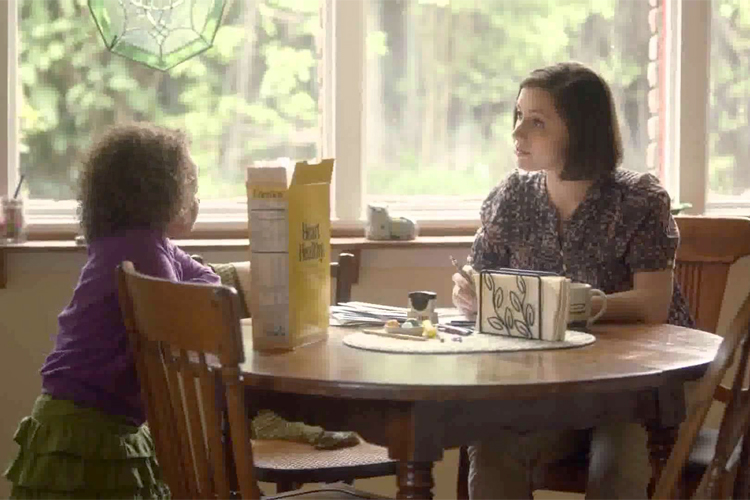A boyfriend and I are in Montreal. We are holding hands and walking along Rue Sainte Catherine, mostly window-shopping. The relationship is still relatively new so we are still very fond of each other, affectionate even. Suddenly, an angry man crosses our path, spits and hisses something we don’t quite catch. Whatever he has said, we know it isn’t nice. We know why we’ve angered him. He isn’t the first stranger to have some kind of objection to our relationship and he won’t be the last, because I am black and my boyfriend is white.
That boyfriend and I have long since broken up but I’ve never forgotten that moment, the unexpected flash of anger a bigoted stranger brought into the private circle of our happiness. It’s strange to think that, even in this day and age, interracial relationships beget commentary and, sometimes, controversy.
In 2013, Cheerios debuted a charming commercial, “Just Checking,” where a young girl douses her napping father in Cheerios to keep his heart healthy. This commercial was, somehow, both groundbreaking and controversial. Some people took issue with the commercial because the little girl’s parents had the nerve to marry even though they had different racial backgrounds. The YouTube comments were so vitriolic the video’s comment section was closed. When I first saw the commercial, it didn’t even register that the family was in any way remarkable beyond their wholesome good looks and the adorable premise.
It was only in 1967 that the Supreme Court ruled, in Loving vs. Virginia, that the state’s anti-miscegenation laws were racist — not nearly so long ago as we might assume. Though interracial marriage has risen steadily over the past three and a half decades, society’s attitudes, at least as conveyed by popular culture, have been much slower to change.
Interracial relationships on television were something of a taboo for many years. The American public simply wasn’t ready to see two people from different races loving each other and maybe having sex. Certainly, there were Lucille Ball and Desi Arnaz in “I Love Lucy” in the 1950s. “The Jeffersons” was innovative not only for depicting an upper-middle-class black family, but also a couple in an interracial relationship — Tom and Helen Willis. The Willis’s marriage was routinely the butt of the joke as George Jefferson ridiculed them, but the couple was there; they were seen.
Today, interracial relationships on television are somewhat more common. Shonda Rhimes, in particular, never misses an opportunity to include interracial relationships on her shows, “Private Practice,” “Grey’s Anatomy” and “Scandal.” She recognizes that not all interracial relationships occur between black and white people, a rarity. Most refreshing is that racial difference is not used as a narrative device. The characters simply are who they are and love whom they love. Even a sitting Republican president is getting in on the act, on “Scandal,” where Fitz and the impeccably dressed Olivia Pope are passionately in love and kept apart by forces greater than themselves. They face so many obstacles as a couple that, frankly, race is the least of their worries.
Since seeing “Just Checking” and noting the response, both negative and positive, I’ve started paying more attention to commercials and the kinds of families who are represented in those commercials. It has been really comforting to see so many interracial families and families of color being represented, being seen. That comfort rises out of seeing more evidence, on television, of the world as it really is, not hopelessly trapped in how it once was.
Clearly, a commercial is just a commercial, but we shouldn’t dismiss the importance of inclusion in advertising. When advertisers ignore diversity, it is because they don’t think the lives of others matter. There is not enough of a financial imperative for those lives to matter. Though the past few years have brought progress, there is still work to be done. There are all kinds of people who continue to be largely ignored by advertisers, whose lives largely go unseen. They deserve their moment.
We continue have these imperfect but necessary conversations about diverse representation in spheres both great (e.g., our elected leadership) and small (e.g., the entertainment we consume), because it means so much to be seen, to feel seen, to feel acknowledged as a part of this great big world.

